The design hasn't much in common with Arduino except that it uses an AVR (in this case the ATMEGA1284P) and the Arduino IDE for programming. I have found that I lack lots of knowledge to make this work but I'm willing to learn. The primary aim is to get programming Z80 machine code and design the hardware so that it can be expanded.
The components used are mainly things I have laying around. An ATMEGA1284P which I believe was a sample from Atmel. A Z80 I won on eBay ages ago and one of the many Amic A65308A 32K SRAMs I also won on eBay. I have some 7404s. The only things I lack are the 74138 and 74374 needed for the output port hijacked from the excellent Z80 SBC by Grant Searle (chips on order).
Once I have a good working board with an expansion bus, the plan is to design several expansion cards to plug in to do useful things. I/O ports, motor drivers, communications etc.
If you have any ideas for expansion boards or enhancements to the main PCB, please feel free to comment.
 Steve Smith
Steve Smith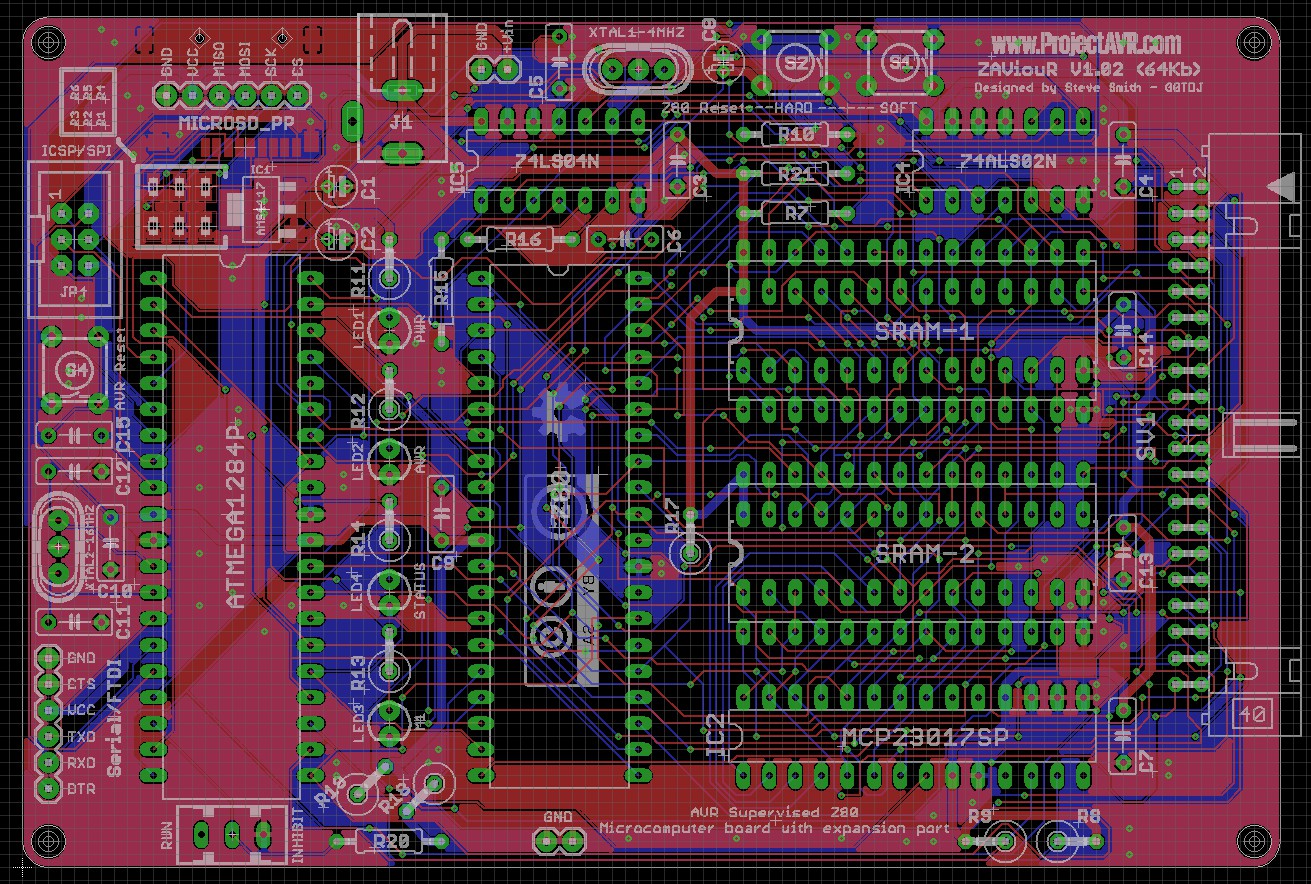 The 8-bit I/O Port:
The 8-bit I/O Port: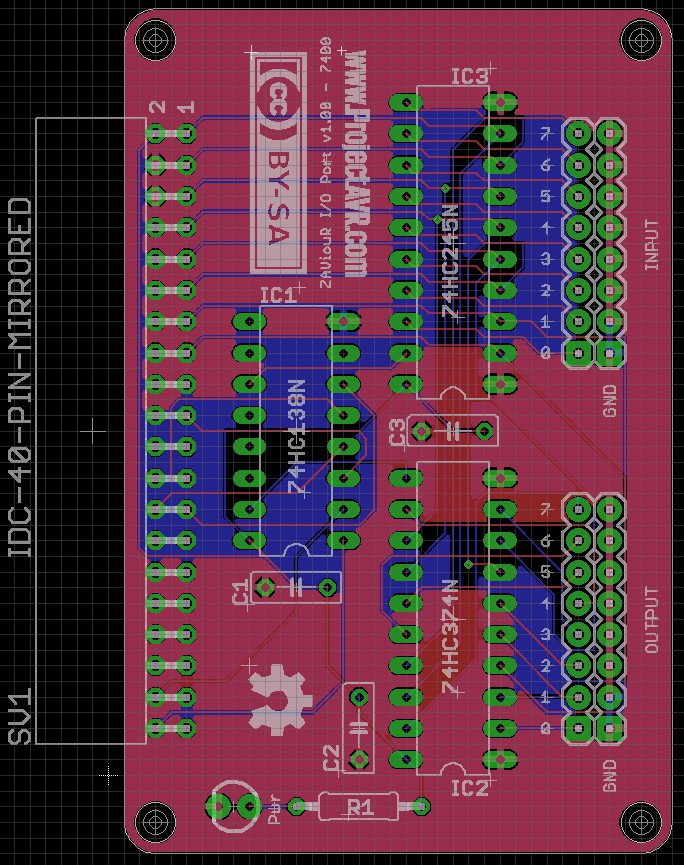

 So here's the new layout of ZAViouR v1.02 and the I/O Port which is a single port version of
So here's the new layout of ZAViouR v1.02 and the I/O Port which is a single port version of 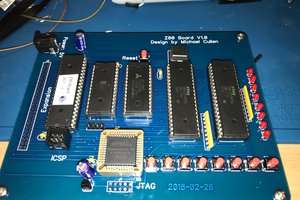
 Michael Cullen
Michael Cullen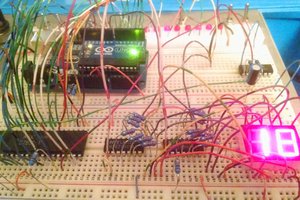
 techav
techav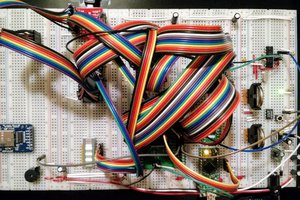
 James Ots
James Ots
 agp.cooper
agp.cooper